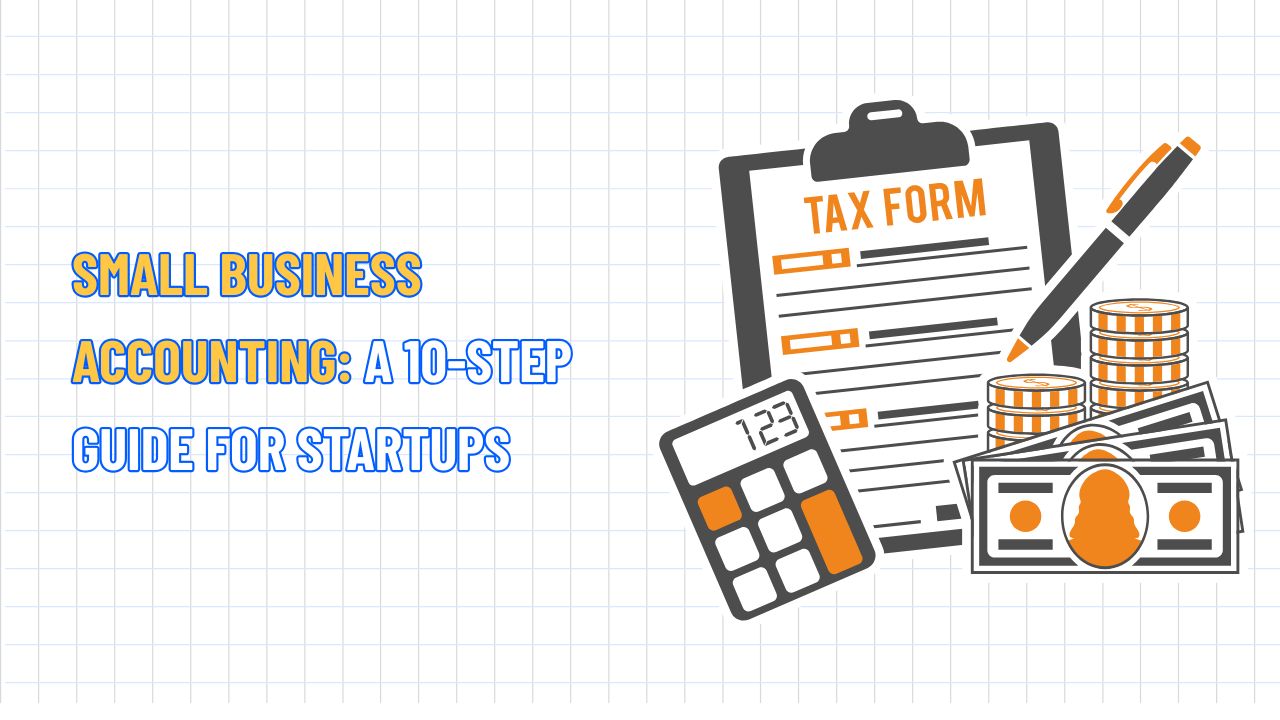TOP 15 Detailed Small Business Tips to Help You Succeed
Table of Contents Hide
This article is for you if you dream of launching a small business or taking your current venture to new heights. Join NextSky as we dive into 15 detailed small business tips to help you overcome challenges, build a strong brand, and achieve long-term success.
1. Create a detailed business plan as your roadmap
A business plan is your compass, guiding your business in the right direction, attracting investors and partners, and reinforcing your team’s commitment. A clear, detailed plan is essential and should include:
- Executive summary: Briefly outline your idea, goals, and why your business exists. For example, explain what makes your products exceptional if you sell handmade goods.
- Market analysis: Research your target customers, competitors, and industry trends. For instance, if you sell organic food, study local or online demand.
- Financial projections: Create a budget, estimate required capital, and forecast revenue for the next 1–3 years.
- Operational plan: List specific steps for operations, from sourcing to production to delivery.
Real-world example: An online fashion retailer crafted a business plan identifying sustainable clothing as their niche. This plan helped them secure $5,000 from a local investor.
Read more: What is A Small Business? A Comprehensive Guide to Definition
2. Define a unique selling proposition (USP) to stand out
Your USP answers the core question: “Why should customers choose you over competitors?” It could be an exclusive product, faster service, or personalized experience. To define your USP, ask:
- What makes your product or service different?
- What will customers remember you for?
Example: If you run a Shopify store, a strong USP could be a fast, visually stunning website powered by NextSky themes like Glozin or Umino, delivering a seamless shopping experience.
Action steps:
- List 3–5 strengths (e.g., 24-hour delivery, handmade products, 24/7 support).
- Compare with competitors to identify where you excel.
- Highlight your USP on your website, social media, and marketing emails.
Pro tip: Use tools like AnswerThePublic to find common customer questions in your industry and refine your USP.

Read more: How to Start a Business in 14 Simple Steps to Success
3. Know your customers like you know yourself
You can’t sell effectively without understanding what your customers want. Build a detailed customer profile by answering:
- Demographics: How old are your customers? What’s their profession? Where do they live?
- Shopping behavior: Do they shop online or in-store? Which platforms do they use—Instagram, TikTok, or websites?
- Needs and pain points: What solutions are they seeking? For example, if you sell furniture, do they need space-saving or multifunctional pieces?
Global example: An international coffee chain identified their target as 25–35-year-old office workers who value quiet spaces for work or online meetings. They enhanced the customer experience with free Wi-Fi, power outlets, and private work areas.
Action steps:
- Create a short survey on Google Forms to ask about customer preferences and habits.
- Analyze data from Google Analytics or Shopify to see where website visitors come from and what they buy.
- Join relevant Facebook groups or forums to listen to customer needs.
4. Leverage technology to work smarter
Technology is your ally, saving time, streamlining processes, and reducing errors. Consider these tools:
- CRM (Customer Relationship Management): Track customer info, send personalized emails, and build lasting relationships to boost sales.
- Accounting software: Automate invoicing, expense tracking, and financial reporting to focus on growth instead of paperwork.
- E-commerce platforms: Shopify is ideal for quickly building an online store. NextSky’s Agile theme optimizes speed and SEO for a smooth shopping experience.
Action steps:
- Sign up for free trials of tools like HubSpot (CRM) or QuickBooks (accounting) to experience their benefits.
- If using Shopify, explore NextSky themes like Umino to enhance customer experience and store performance.
Real-world example: A small jewelry store used CRM software to send birthday reminder emails, increasing sales by 15% in a short period.

5. Treat customers like close friends
Exceptional customer service solves problems and makes customers feel valued. Simple, effective ways to do this include:
- Personalized thank-yous or small gifts: Include a handwritten note or small gift with orders to show appreciation.
- Quick responses: Reply to social media messages or emails within 1–2 hours for a professional, caring impression.
- Listen and improve: Act on positive or negative feedback to enhance the customer experience.
Key stat: A 2023 study found 86% of customers are willing to pay more for better service.
Action steps:
- Add a “Thank you for your support!” line to order confirmation emails.
- Install a chatbot on your website for 24/7 support, ensuring all inquiries are addressed promptly.
Real-world example: A bakery added thank-you cards and free samples to orders. Customers shared photos on Instagram, doubling brand visibility.
6. Market smartly on a small budget
You don’t need millions to market effectively. The key is innovative, practical strategies:
- Local SEO: Ensure your business appears on Google when customers search for nearby services or products. For example, adding keywords like “tailor in Da Nang” to your website and Google My Business boosts visibility.
- Valuable content: Write blogs, create how-to videos, or share tips about your product/service. Post “5 No-Equipment Home Workouts” for a sports gear business to provide value and keep your brand top-of-mind.
- Social media: Instagram and TikTok are great for visual products, while LinkedIn suits B2B services. A nail salon’s TikTok video on nail care got 10,000 views and 50 new customers in a month.
Action steps:
- Create a Google My Business account and update store details.
- Plan weekly social media posts using Canva for eye-catching visuals.

7. Build a professional, user-friendly website
- Clear design: Within 5 seconds, customers should know what you offer without searching.
- High-quality images: Use professional photos instead of blurry, generic ones to drive purchases.
- Fast load times: Every second of delay can cause customers to lose. NextSky’s Agile theme ensures a quick, smooth experience.
Key stat: Google reports 53% of users abandon a website if it takes over 3 seconds to load.
Action steps:
- Test your website speed with Google PageSpeed Insights to identify strengths and weaknesses.
- Upgrade to SEO-optimized themes like NextSky’s Umino for speed and search engine compatibility if using Shopify.
8. Manage finances carefully
Money is the tool and foundation for stability and growth. Intelligent financial management avoids trouble and maximizes profits:
- Separate personal and business accounts: This ensures accurate tracking, simplifies taxes, and builds professional habits. Clear accounts show actual cash flow for better planning.
- Track cash flow proactively: Know if you’re profitable or losing money to make informed decisions. Detailed tracking predicts future cash flow, preventing shortages.
- Maximize tax deductions: Many business expenses, like home office costs, software, ads, or outsourced services, can reduce your tax bill.
Example: A freelance graphic designer saved $800 annually by tracking Adobe software and work-related expenses. Small record-keeping efforts yield significant financial benefits.
Action steps:
- Open a dedicated business bank account to separate finances.
- Use apps like Wave, QuickBooks, or Money Lover for easy expense tracking.
9. Build a reliable team
A great team is a lever to save time and accelerate growth. Prioritize hiring people who:
- Share your passion and vision.
- Bring diverse skills for multiple roles.
- We are eager to learn, share ideas, and improve together.
Action steps:
- Write detailed job descriptions outlining required skills and responsibilities.
- Post openings on local Facebook groups or LinkedIn to reach suitable candidates.
Cost-saving tip: If a full-time team isn’t affordable, hire freelancers on Upwork or Fiverr for design or content creation tasks.
10. Stay flexible and embrace innovation
Markets change daily, and staying ahead requires adaptability. Start with simple, practical actions:
- Observe competitors: Learn how they attract customers, then adapt and create your own approach.
- Listen to customers: Their feedback mirrors your strengths and areas for improvement.
- Try new things: Experiment with digital products or flexible service packages to meet diverse needs.
How to start: Ask 10 customers what products or services they want you to add. Their suggestions could spark a breakthrough.
Real-world example: A gift shop added personalized engraving, boosting revenue by 25% during the holiday season.
11. Invest in learning and development
New knowledge keeps you and your team competitive. Invest in yourself and staff with practical steps:
- Attend webinars offering trend updates, expert insights, and networking opportunities. A few hours monthly can spark new ideas.
- Follow industry experts: Platforms like X or YouTube are treasure troves of free knowledge, with experts sharing strategies and real-world lessons to avoid mistakes.
- Train your team: Host internal training or encourage staff to take courses on tools like AI to optimize processes and boost efficiency.
Action step: Sign up for a free course on Udemy or Coursera, like “SEO for Beginners,” to build a strong foundation.
12. Protect your intellectual property
Your logo, designs, or creative ideas are invaluable assets. Protect them from copying or theft:
- Consult a lawyer to register trademarks or patents for legal ownership.
- Securely store critical documents on Google Drive, Dropbox, or encrypted drives to prevent loss.
Action step: Check with the Vietnam Intellectual Property Office to see if your logo or product qualifies for registration.
Real-world example: A fashion designer registered their logo, protecting their brand from copycats and boosting customer trust.
13. Build a network of strategic partners
Collaborations unlock unexpected growth opportunities. Partner with complementary businesses for mutual value:
- If you sell Shopify themes, team up with a marketing firm to offer a bundled design-and-advertising package, benefiting customers and expanding your reach.
How to start: Find a local complementary business, like a florist partnering with a wedding planner, and propose a win-win collaboration.
Real-world example: A bakery partnered with a local coffee shop to sell pastries there, increasing revenue by 15% and reaching new customers.
14. Retain loyal customers
Loyal customers are your most stable, sustainable revenue source. Build lasting relationships with simple, effective tactics:
- Offer discounts or small gifts for repeat purchases to show appreciation.
- Create a loyalty program, like “Buy 5, Get 1 Free,” to encourage return visits.
- Send thank-you emails or periodic offers to stay top-of-mind.
Key stat: A 2024 report found loyal customers spend 67% more than new ones, highlighting their importance.
Action step: In your order confirmation emails, offer a discount code for the next purchase.
15. Use data to make wise decisions
Data guides you to what’s working and what needs improvement, replacing guesswork with facts:
- Website performance: Track bounce rates, time on site, and purchases to assess user experience.
- Social media: Identify posts with high likes, shares, or comments to tailor content to your audience’s preferences.
- Customer acquisition cost: Know how much you spend to gain a new customer to balance marketing budgets.
Running a small business is a challenging but rewarding journey. With these 15 tips, you can build a solid foundation, from crafting a unique USP to using NextSky’s Shopify themes to optimize your online store. Are you ready to turn your idea into a thriving business?










